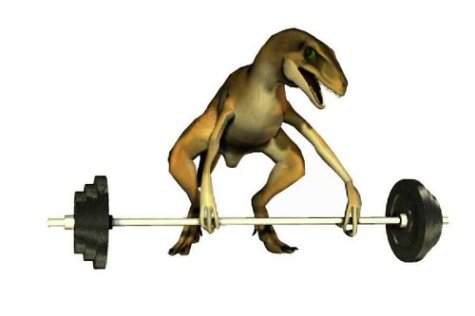 (See yesterday’s post for the first part of this series)
(See yesterday’s post for the first part of this series)
My mother-in-law gave me The Paleo Solution: The Original Human Diet by Robb Wolf to read first. I put it aside for a few days, reluctant to start reading what seemed to be a very scientific book. Then a heat wave hit, and the kids wanted to be in the pool practically every second of the day. I had to be out there with them; so The Paleo Solution became my poolside read. I will admit that I skipped a few chapters here and there because they were too “sciency” (ha! new word!) and because I just didn’t want to focus that hard. However, the rest of the book surprisingly made a lot of sense. Basically, the Paleo lifestyle entails what the author believes our ancestors, or cavemen, followed. Although I am a firm believer in God creating the universe and all that is in it, therefore denying the existence of “cavemen”, I do get the gist that this diet, or lifestyle, would have most likely been prevalent for Adam and Eve and subsequent generations after the fall of man. A Paleo lifestyle consists of three components: food, fitness, and sleep. When these three components are followed within Paleo guidelines, physical health should improve, weight will be lost, and athletic performance will be increased. Here’s a closer look at these three components.
1. Food. Well, what food would have our early ancestors eaten? Certainly nothing processed and nothing that would have taken too much effort to make. From these concepts, the Paleo foods are derived: an abundance of fresh vegetables, fresh fruits, nuts, eggs, healthy fats such as coconut oil and olive oil, beef, chicken, bacon, pork, shrimp, and fish. Foods not allowed on the Paleo diet are cereal grains, legumes such as beans and peanuts, refined sugars, dairy products, potatoes, processed foods, and vegetable oils. Why would someone want to avoid grains, legumes, and dairy? Well, I would encourage you to read Robb Wolf’s book yourself to get into all the technical terms; but to put it simply, these three groups of foods are really all in the same category. They contain proteins that irritate the gut. They can cause a lot of issues in people with automimmune diseases. Because they damage the gut lining, your body does not absorb nutrients correctly. Grains and dairy also affect the gall bladder, causing your body to misuse vitamins. Basically, these foods strip down your gut lining and other organs, leaving you wide open for a host of diseases and even cancer.
2. Fitness. The first people to live on this earth did not sit at a desk staring at a computer all day. Adam himself was cursed to a lifetime of working the fields by the sweat of his brow when he disobeyed God’s command in the garden of Eden. People back in those days did a lot of running, carrying, building, digging, hunting, climbing, gathering, etc. Daily exercise was a natural part of their lives. And while many people today exercise to lose weight or stay fit, the truth is “If you do not exercise, you are broken.” (The Paleo Solution: The Original Human Diet by Robb Wolf, p. 145.) Basically, in order to be complete, a person following the Paleo lifestyle should do enough physical exercise to build some muscle, keep that muscle, and strengthen bones. This exercise would not be cardiovascular in nature, but rather would focus on strength, mobility, flexibility, power, and endurance. Thus the Paleo lifestyle emphasizes circuit training, also known as interval training. Robb’s book offers a plethora of exercises to try, and there are many websites devoted to Paleo fitness and exercise as well.
3. Sleep. Again, going back to the first people on this earth, it is unlikely that any of them were “night-owls.” You wouldn’t have found a person then that stayed up way into the wee morning hours working on a project and then rising early to a loud alarm clock, chugging coffee or some other source of caffeine to make it through the day. No, these people went to bed when the sun went down and got up when the sun rose. They didn’t need alarm clocks – their bodies were naturally well-rested and would give themselves a “wake-up call.” Subscribers to the Paleo way of life make sure that they get a good amount of quality sleep every night (Wolf’s book suggests at least nine hours!) They get this sleep by sticking to a strict bedtime, making sure their bedroom is completely dark, and avoiding stimulants such as coffee in the afternoon and evening.
After reading Wolf’s book (and then going back later to wade through the more technical chapters), I was mostly convinced. I still had some questions. Won’t I be hungry a lot without grains and dairy to fill me up? Is this some crazy diet that is actually going to mess with my body? Won’t all that meat and produce be expensive? So I hit the internet, found lots of information that settled my fears and misgivings, and encouraged me that this could be the solution our family was looking for. (Here’s an easy post to read about the top five misgivings people have about Paleo).
Okay. The husband and I discussed it at length and decided that we were going to give this Paleo thing a try for at least thirty days. We planned on Monday, July 21, being the first day of this new lifestyle.
(My next post will detail how we planned to do Paleo as a family and the costs involved.)
